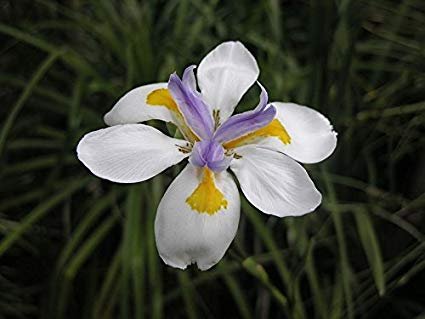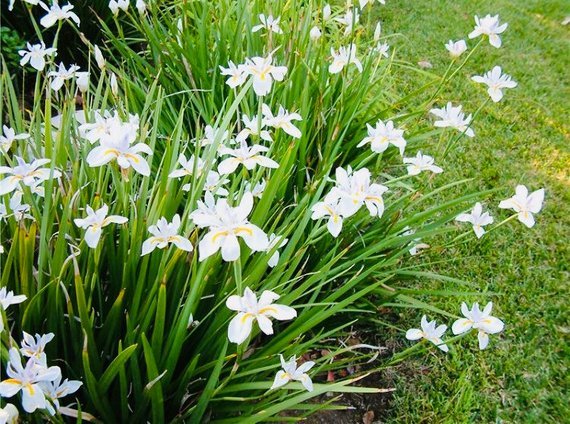Fortnight lilies (Dietes bicolor) are adaptable plants that can survive drought or grow in water. In addition, they bloom from spring to fall and in frost-free areas, even bloom intermittently during the winter. For these reasons, fortnight lilies are often used in commercial landscapes and other areas that receive little maintenance.

Description
The foliage of fortnight lilies resembles that of irises, which are in the same family. They have fan-shaped clumps of long narrow spiky leaves that slowly spread by rhizomes. The flowers are creamy white or pale yellow with brownish violet splotches near the centers. Each bloom lasts only a day or two, but each plant has an abundance of flowers. The plants typically grow 2 to 3 feet wide and tall, but can grow as tall as 4 feet in moist soil or water.

Care
Plant fortnight lilies 2 to 3 feet apart and fertilize twice during the first year. The flower stalks will produce more flowers if the seedpods are removed as they begin to form. Once a flower stalk stops blooming, do not cut them back like other perennial irises.

Trivia
Fortnight lilies are so called because their flowering often occurs in two-week periods. They are also called African iris because they are native to South Africa. Other common names are butterfly iris and butterfly flag.